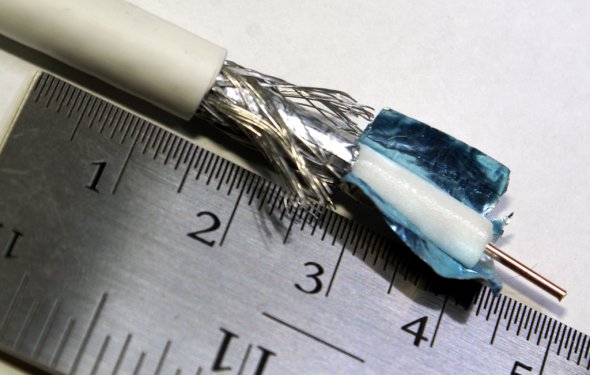Satellite cable VS coaxial cable

Able to cover long distances without signal loss or degradation, this UL-rated bulk coaxial is ideal for HDTV, digital video, and FM broadcasting.
From / 500 FT spool
PVC or Plenum rated 2C/18 gauge Siamese cable; 95% bare copper braided cable and 2 conductor 18 gauge electrical cable in one PVC jacket.
From / 500ft
A higher quality 75Ω coaxial cable that delivers a great performance. It uses a larger, higher-capacity center conductor (18 AWG) and a larger insulating dielectric.
From for 10' Composite Cable
Provides a discreet connection for a variety of audio and video. Run along your wall and painted over for complete invisibility.
From / per 10FT
Complete your home theater visual experience with these flat coaxial cables by Taperwire. They are easily hidden and provide the same picture quality and shielding as standard cables.
From
Compress F, RCA, RG11-F, and Mini-RCA connectors. In addition, by using a screwdriver, you are able to adapt this versatile tool to competitor connectors.
What is Coaxial Cable?
Everyone's heard of coaxial cable, right? Or maybe you've heard it by its hip nickname: "coax" (that's two syllables, co + ax…not the word that means “to draw forth”). It's a fairly common type of shielded data transmission cable, which is made up of two conductors that are coaxially oriented (hence the name), but separated by a layer of insulation. The make-up of your typical coax is as follows: the core consists of a metal wire (conductor #1), which is then surrounded by a layer of nonconductive dielectric insulation, which is itself covered in metallic mesh, foil and/or braid (conductor #2), and then whole shebang is wrapped in a protective outer sheathing, or jacket, which holds everything together and locks out moisture and impurities (sorry Phil Collins, a jacket is required…if you don't get that reference, ask an old person about the 80's).
What is Coaxial Cable Used For?
Good question! Coax is designed to carry high-frequency signals, and to protect those signals against electromagnetic interference (EMI) from external sources. Most people probably associate it with their cable television (CATV) service, and probably have not-so-fond memories of squeezing behind the TV to try and thread the end of the cable onto the wall outlet and/or the back of the TV set. But you'll find these cables in lots of other applications, including commercial radio communications, ham radio, undersea cable systems, closed-circuit television (CCTV), home video equipment, and broadband Ethernet application.

|
Aurum Cables High Quality 3 Pack F-Type 90 Degree Angled Male to Female Adapter Speakers (Aurum Cables)
|